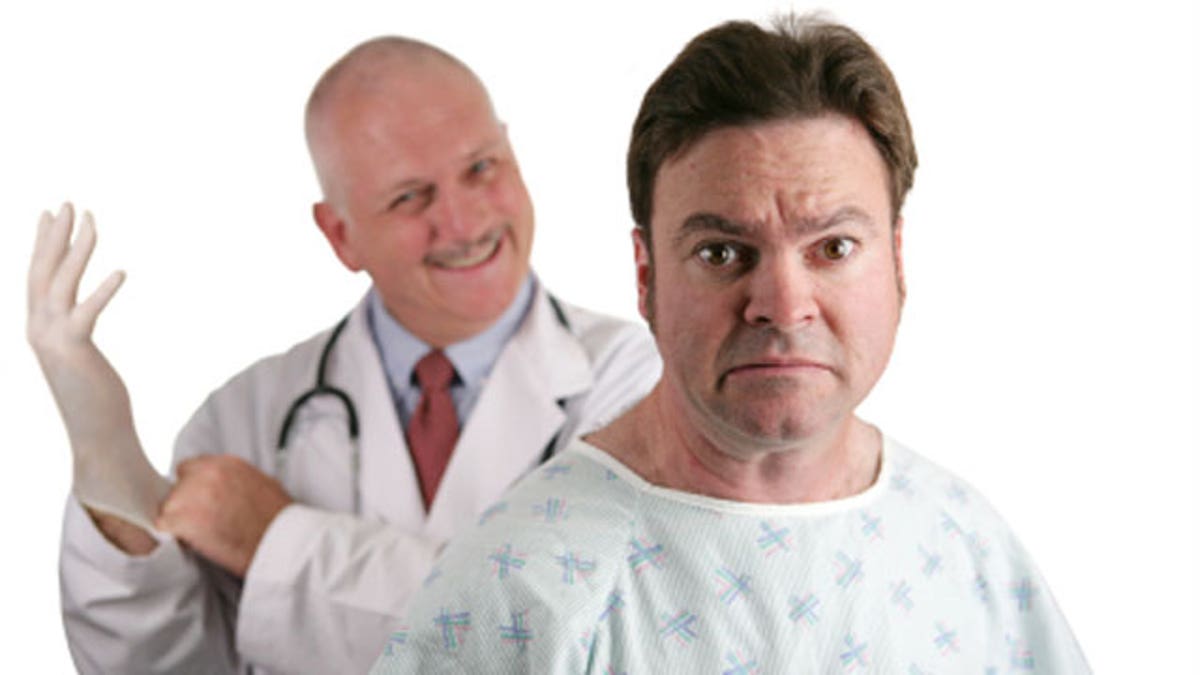
It’s been a leading topic of male health for decades, and it will most certainly be the brunt of jokes for years to come. Prostate cancer is to men what breast cancer is to women. Despite the facts that prostate cancer is the No. 1 cancer occurring in men (aside from skin cancers) and the second leading cause of cancer death (behind lung cancer), many men are still unfamiliar with this highly treatable disease. So it’s time, once and for all, to give all you men out there everything you wanted to know about prostate cancer treatment and prevention.
How is prostate cancer treated?
Treatment options can vary greatly from patient to patient, as is the case with virtually all cancers. The stage of the tumor, its location, one’s age and expected life span, other medical conditions, and other factors all influence a prostate cancer treatment and prevention plan. Often, a doctor will discuss various options with a patient, giving them time to decide the best path to follow regarding treatment.
The following prostate cancer treatment options are available:
Expectant Management (watchful waiting)
Because prostate cancer is slow-growing, some men (those who are older or have other serious or fatal health disorders) may choose to avoid prostate cancer treatment altogether. These men will be closely monitored by their doctors. This option is usually not suggested for young and otherwise healthy men who could fight the disease for a longer period of time because their bodies are stronger and healthier, despite the cancer.
________________________________________________________________________
More from AskMen.com:
Prostate Cancer Overview
4 Fun Ways To Help Prevent Prostate Cancer
Anti-Prostate Cancer Foods
Men's Health Charities
Prostate Cancer Symptoms, Screening & Diagnosis
_________________________________________________________________________
Radical Prostatectomy
Radical prostatectomy is a type of surgery that is performed in the hopes that it will cure prostate cancer by actually removing the entire prostate gland, plus some of the surrounding tissue. This prostate cancer treatment plan is used most often if the cancer has not spread beyond the prostate.
Prostatectomy can involve open surgery, where large incisions are used to remove the prostate directly, or laparoscopic surgery, where several small incisions are used to guide long instruments or even robotic arms to remove the prostate.
Transurethral Resection of the Prostate (TURP)
TURP is a palliative surgical procedure for prostate cancer treatment. This treatment is done to relieve symptoms but not to cure the cancer. In TURP, an instrument called a resectoscope is passed through the urethra and an electrical current cuts or vaporizes prostate tissue.
Radiation
Radiation therapy for prostate cancer treatment uses high-energy rays or particles to kill cancerous cells. It is often used for low-grade tumors or tumors that have spread only to nearby tissue. Two types of radiation therapy are used: external beam radiation and internal radiation (brachytherapy). Internal and external refer to the source of the radiation, whether coming from inside or outside the body during prostate cancer treatment.
Cryosurgery
Cryosurgery (also called cryotherapy or cryoablation) is used to treat prostate cancer by freezing the prostate.
Hormone Therapy
Hormone therapy, also called androgen deprivation therapy (ADT), reduces levels of androgen, a hormone that stimulates the prostate cells to grow making the prostate shrink or grow slower during prostate cancer treatment.
Chemotherapy uses anticancer drugs that are injected into the bloodstream or taken orally. These drugs spread throughout the body and are thus useful for the treatment of advanced prostate cancer or cancer that has spread (metastasized) to other parts of the body. Depending on the features of the prostate cancer, any combination of these treatment options can be used.
Painkillers are usually also prescribed.
How do I prevent prostate cancer?
Prostate cancer prevention generally focuses on three domains: diet, lifestyle and medication.
Diet
* Avoid high-fat foods, particularly foods high in saturated fats.
* Limit red meat and processed meats.
* Drink less alcohol, generally no more than two drinks per day for most men.
* Eat a variety of fruits, vegetables and whole grains.
* Foods rich in lycopenes may prevent DNA damage (tomatoes, pink grapefruit and watermelon)
* Broccoli, cauliflower or other cruciferous vegetables may reduce the risk of disease.
* Soy products, legumes, pomegranate juice, and green tea may reduce the risk, though the evidence is not entirely clear.
* Vitamin supplements such as Vitamin E or selenium may lower prostate cancer risk, but it seems unclear, and heavy dosages of multivitamins may actually increase the risk (if you are considering vitamin supplementation, talk to a doctor)
* Eat foods rich in omega-3 fatty acids.
Lifestyle
* Increase aerobic activity.
* Try to maintain a healthy weight.
* Several studies have suggested that a high ejaculation frequency (through sex or masturbation) has a protective effect (around 20 times or more per month seems most beneficial) -- like you really needed another reason.
Medications
Finasteride (Proscar) may be useful in preventing prostate cancer risk if taken daily for a long period of time. This prostate cancer medication works by preventing the body from making androgen. Though it might lower the risk, it may also make cancer more aggressive and also affects sexual function.
Prostate Possibilities
Prostate cancer is a common cancer in men, but it is highly treatable and manageable. Continuing research will lead to improvements in diagnosis, treatment and prevention, ensuring that future decades of men worry less about this disease. For men of the present, however, simply knowing some of the risk factors and features of prostate cancer will hopefully lead many toward a healthy disease-free lifestyle for years to come.
